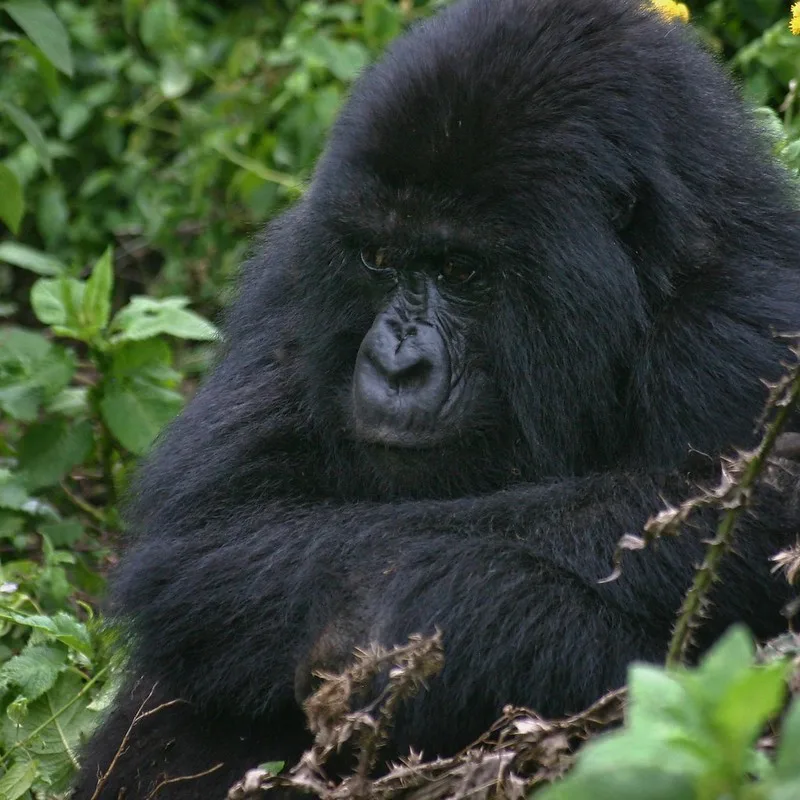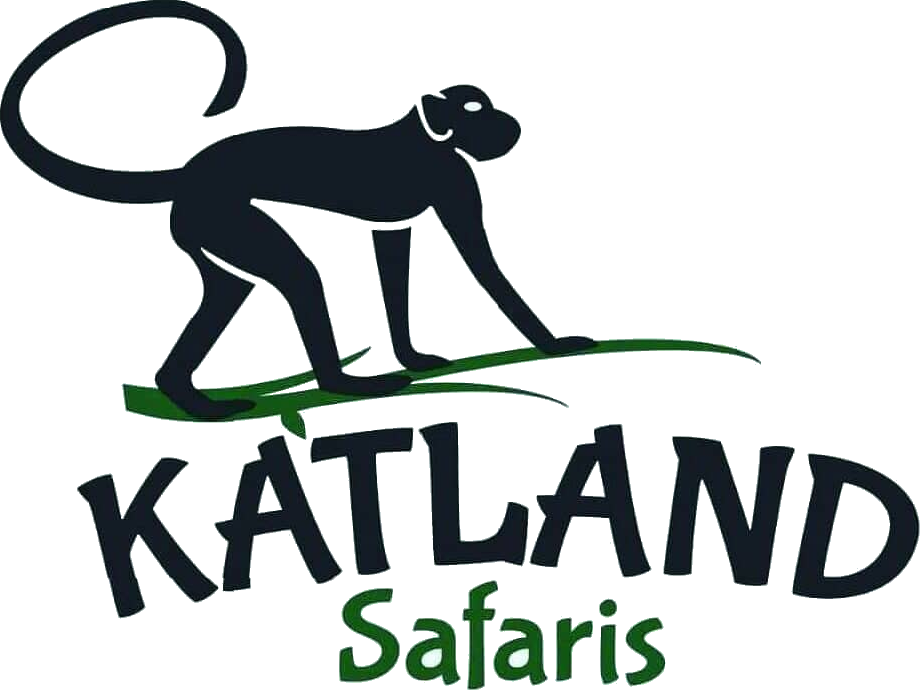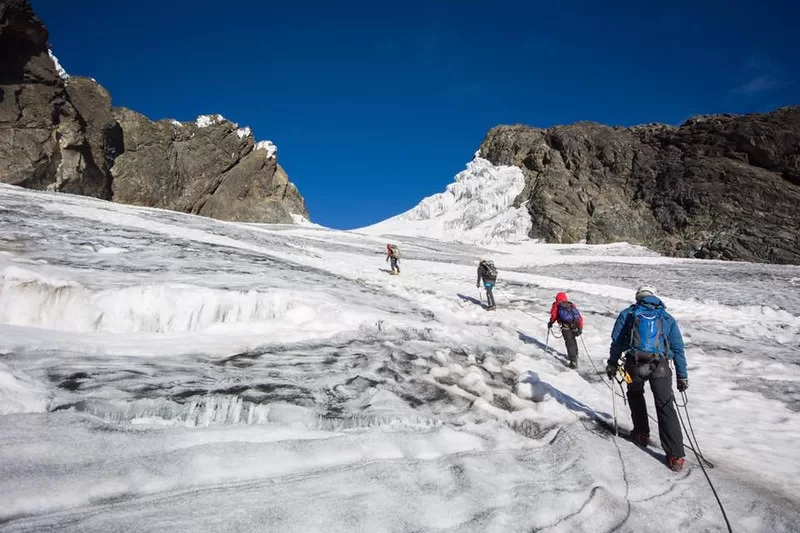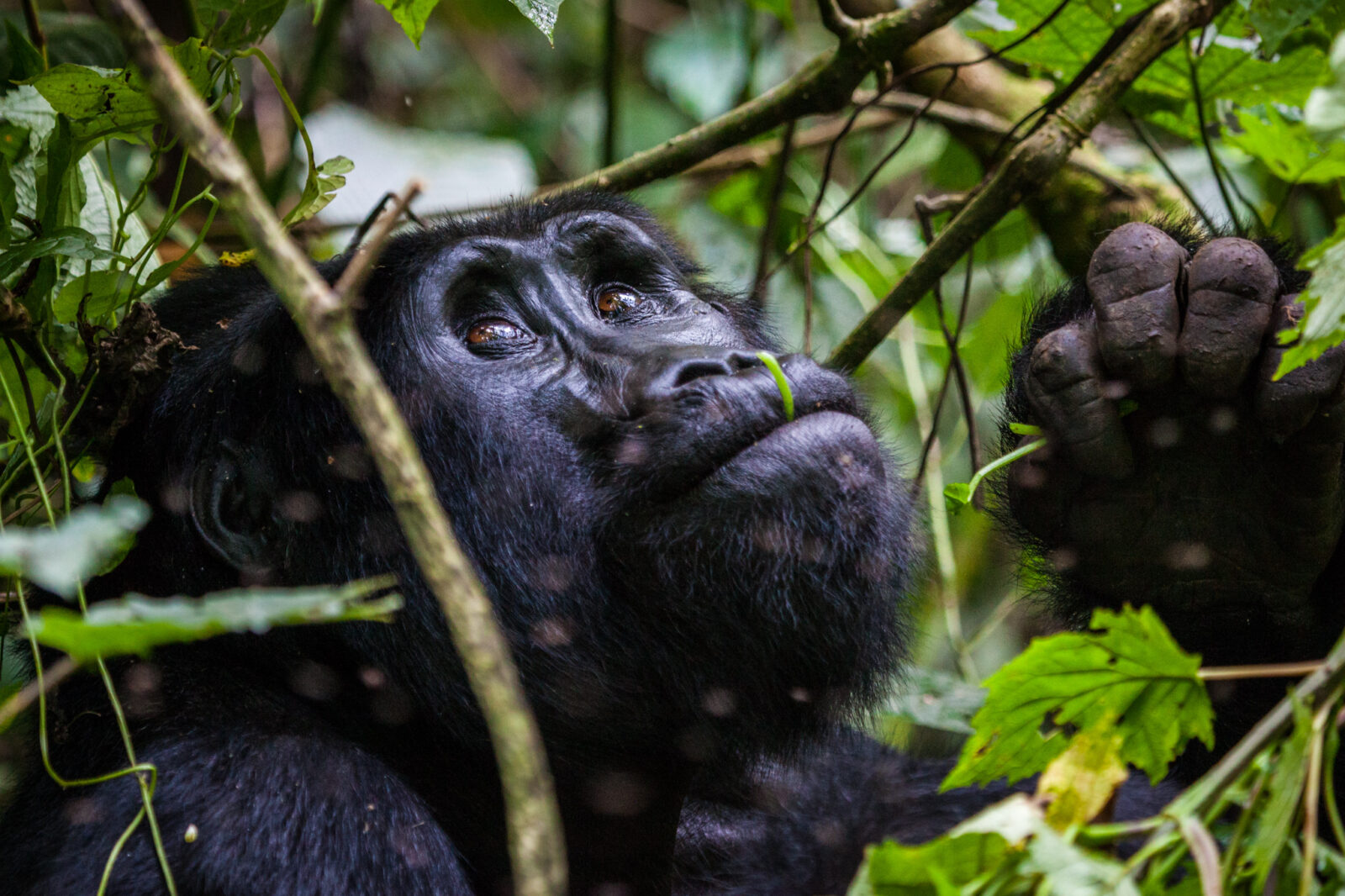When to book a gorilla habituation safari.
While many are considering going on a gorilla habituation safari, the big issue is: when is the best time to do it? Good news! I’ll be happy to address any questions you may have regarding the experience today.
In the Rushaga and Nkuringo sectors of Bwindi NP, researchers are actively studying two gorilla families—the Byikyingi and the Bushaho—as part of a gorilla habituation experience. In 2014, the Uganda Wildlife Authority opened up gorilla habituation to anyone interested in giving it a try.
In particular, The term “gorilla habituation” describes the method by which a group of gorillas are taught to get used to human presence. While there are no hard and fast rules for selecting habituated gorilla groups, it typically takes two to three years of continuous habituation before a group is considered fit to be followed by tourists. The gorillas get used to human presence and behavior during this period because a group of researchers, guides, and rangers visit the identified wild gorilla group every day.
Unless taught, gorillas may be quite unpredictable since they are wild creatures. While gorillas habituate, scientists learn a lot about them, gather samples, and get a feel for their unique personalities and habits, all of which help them deal with the animals more effectively.
In order to determine when the gorilla group is prepared to welcome visitors, the naming process has been completed. Researchers will put the group through its paces in a mocking exercise where only a small number of participants are given the habituation experience after they have completed the walk.
You get up to four hours with the gorillas once you meet them, compared to the one hour in normal tracking, and a team of researchers and rangers will take you through the habituation process. Only four visitors per day can join a habituation group, and each trek also includes a team of guides who help with the process.
After passing this mimicking test, the habituation family in question is released for routine monitoring. While this may seem like a great deal and entice many to make a purchase, keep in mind that these gorillas are semi-habituated, meaning they are still in the process of habituating to their new environment. As a result, they can be elusive and shy at times, choosing to remain at a distance or even actively moving as you approach them.
When is the optimal time to plan a trip to habituated gorillas?
There are just four permits available each day for the gorilla habituation experience, although it runs all year round. People who are really fond of gorillas, scientists, or photographers often do this, since the primates are still quite timid and big groups are discouraged.
Since Bwindi Impenetrable National Park is located in a rainforest, visitors should be prepared for the possibility of rain at any time of day or night; yet, the park is most pleasant during the dry seasons (June–August and December–February), when rainfall is light. Even while it’s possible to habituate gorillas during the rainy season, doing so isn’t ideal since the animals are more active at this time, which makes the terrine of Bwindi an unpleasant place to be and the ground is slippery.
You should know that there are only four permits available each day, so you’ll need to book your trip at least three to four hours before the departure date (especially if you’re planning to go during the dry season). Using a tour operator is highly advised.
If you’re wondering which business to pick, Katland Safaris is here to help. We’ll give you our best advice on when to book and show you what dates are available, so you can choose the ones that suit you and your vacation. To see the current permit status, click here.
Here are some more questions people often ask regarding gorilla habituation that I think I’ll leave unanswered until I’ve given you all the information.
What does a habituation permit for gorillas cost?
You need to schedule your gorilla habituation permit as soon as possible since it is far more costly than the gorilla tracking permit, which costs USD800.00 per person each trip. There are only four permits available per day. You get four hours of face-to-face time with the gorillas and access to a research team that can fill you in on all the details of the encounter and more for this price. You need to be at the park for the briefing by 7:00 am since the experience doesn’t start until 7:30 am.
Anyone above the age of fifteen is welcome to participate in gorilla habitatuation, which has the same minimum age requirement as gorilla tracking.
How is the Gorilla Habituation Experience different from Gorilla Tracking?
Among the many distinctions in the experiences, the duration stands out as the most important. Unlike gorilla habituation, where visitors get up to four hours with the gorillas—enough time to view them, get information from the researcher, take pictures, and even participate in the naming ceremony—gorilla tracking allots just one hour with each group before you’re told to leave the forest.

One hour of gorilla habituation costs USD1500.00 per person per trek, while a one-hour gorilla permit costs USD700.00 per person each trek.
Where can one find a suitable location for a gorilla habitat?
Where a customer chooses to stay during their trip is totally dependent on their preferences and budget, since both Rushaga and Nkuringo provide a wide variety of housing alternatives, from the most luxurious to the most modest. A few examples of them include the following: Clouds Mountain Gorilla Lodge, 4 Gorillas Lodge, Nkuringo Bwindi Gorilla Lodge, Rushaga Gorilla Valley Lodge, Rushaga Gorilla Camp, Rushaga Havens Lodge Bwindi, and Nsongi Camp.
Bwindi Impenetrable National Park: How to Get There?
Depending on your location, you have the choice to start your journey in Entebbe or Kigali, making Bwindi Impenetrable National Park easily accessible. You may choose between a land cruiser or a 4×4 Safari Van, both of which are suited for road journeys, when you book with Katland Safaris.
There are many picture vistas and lunch breaks along the route that make the eight to nine hour trip from Entebbe to Bwindi worthwhile. Keep in mind that you get to stop at the Equator crossing in Kayabwe as well; our guides are well knowledgeable and will never make the mistake of ignoring an intriguing location.
The trip from Kigali to Cyanika, Uganda, takes no more than four or five hours, including breaks in Kigali to see the genocide museum and at the border of Cyanika. If you plan on returning to Kigali after your vacation, it is recommended that you get an East African Visa in order to facilitate re-entry.
We also provide domestic flights from Entebbe to Kisoro Airstrip; this flight will cut your travel time in half, taking only one hour. From Kisoro, a vehicle will take you to a lodge in Bwindi, where you will spend the night before your gorilla habituation adventure. Keep in mind that the weather in the area necessitates early flights to Kisoro.
For a trouble-free safari, get in touch with Katland Safaris and we’ll create a plan just for you, or choose from the options below: Safaris include flying in gorillas for three days, an immersive gorilla habitat for three days, a safari including chimpanzees for five days, and a safari including flying in gorillas for five days are all available. Added packages available for your booking.
With headquarters in Uganda, Katland Safaris is a destination management firm that specializes in safaris. From this location, we serve as a hub for providing East African nations like Tanzania, Uganda, Rwanda, and Kenya with an unforgettable safari experience. We have been in business for more than a decade, and both SafariBooking and TripAdvisor have given us great reviews.


